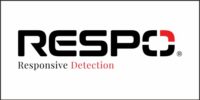 As urban environments expand and evolve, the need for comprehensive security frameworks becomes increasingly urgent. Smart cities, defined by their use of interconnected technologies such as Iot, artificial intelligence (AI), and integrated communication systems, are uniquely positioned to address the growing challenges of urban safety.
As urban environments expand and evolve, the need for comprehensive security frameworks becomes increasingly urgent. Smart cities, defined by their use of interconnected technologies such as Iot, artificial intelligence (AI), and integrated communication systems, are uniquely positioned to address the growing challenges of urban safety.
Yet, while surveillance infrastructure in these cities is sophisticated, critical gaps remain—particularly during night-time and covert operations.
Traditional surveillance tools like CCTV cameras and patrol units often underperform under low-light conditions or when discretion is paramount. Drones, when integrated into smart city security grids, emerge as transformative assets capable of delivering superior situational awareness, operational stealth, and data intelligence during night surveillance and covert security missions.
This article explores how drones enhance smart city security ecosystems for nocturnal and covert operations, outlining their applications, integration strategies, challenges, and business opportunities.
The Imperative of Night Surveillance and Covert Security
 Security risks in urban environments often intensify at night. Crimes such as burglary, smuggling, vandalism, and illicit trafficking typically peak during night-time hours when reduced visibility hampers traditional surveillance. Similarly, covert security operations—whether targeting organized crime, terrorism, or espionage—demand discretion, speed, and precision. In both contexts, achieving situational awareness is difficult through fixed or overt surveillance mechanisms. Smart cities, therefore, require adaptable tools that operate effectively in darkness, cover vast areas quickly, and maintain operational secrecy.
Security risks in urban environments often intensify at night. Crimes such as burglary, smuggling, vandalism, and illicit trafficking typically peak during night-time hours when reduced visibility hampers traditional surveillance. Similarly, covert security operations—whether targeting organized crime, terrorism, or espionage—demand discretion, speed, and precision. In both contexts, achieving situational awareness is difficult through fixed or overt surveillance mechanisms. Smart cities, therefore, require adaptable tools that operate effectively in darkness, cover vast areas quickly, and maintain operational secrecy.
The Role of Drones in Smart City Night Surveillance
When integrated into security grids, drones transform night operations by serving as mobile, intelligent, and discreet surveillance nodes. Their strategic advantages include:
- Thermal and Infrared Imaging: Advanced drones are equipped with infrared cameras and thermal sensors that detect heat signatures, enabling authorities to track human or vehicle movements regardless of lighting conditions.
- Low-Light and Night Vision Cameras: Drones outfitted with enhanced night vision technology provide clear visuals in low-light environments, supplementing or surpassing fixed CCTV systems.
- Silent Propulsion Systems: Modern drones use noise-reducing propeller designs, allowing them to operate discreetly during covert operations without alerting suspects.
- Rapid Deployment and Coverage: Unlike fixed surveillance systems, drones can be quickly deployed to monitor large areas, urban peripheries, or specific high-risk zones during night-time hours.
- Integration with AI Systems: Drone feeds processed by AI-driven analytics at Integrated Command and Control Centres (ICCCs) can automatically flag suspicious behaviours, unauthorized gatherings, or abnormal activities.
Drones in Covert Security Operations
Covert operations demand stealth, adaptability, and intelligence gathering without compromising mission secrecy. Drones offer unique advantages for such missions:
Discreet Reconnaissance: Small, lightweight drones equipped with silent propulsion can infiltrate restricted zones or monitor suspects undetected.
Surveillance of High-Risk Individuals or Groups: Drones can shadow suspects covertly, relaying real-time data to ICCCs for analysis and decision-making.
Delivery of Covert Devices: In specialized missions, drones can deliver listening devices, sensors, or communication tools to inaccessible or dangerous areas.
Multi-Unit Coordination: Swarm-enabled drones can operate collaboratively, surrounding a target zone while maintaining discretion.
Evidence Collection: High-definition video captured at night or in concealed missions provides law enforcement with actionable evidence for judicial processes.
Architectural Integration: Drones within Smart City Security Grids
The success of drones in night and covert operations relies on seamless integration with smart city infrastructure. This integration is multi-layered:
- Drone Fleet Management Platforms: ICCCs oversee drone deployment, route planning, and stealth protocols, ensuring efficient allocation for night-time missions.
- Iot and Sensor Fusion: Drones operate as mobile Iot nodes, integrating thermal, acoustic, and environmental sensor data with fixed city infrastructure for comprehensive situational awareness.
- AI and Data Analytics: AI systems analyse drone feeds in real time, identifying unusual thermal signatures, suspicious gatherings, or movements inconsistent with typical nocturnal activity.
- High-Security Communication Networks: Encrypted, low-latency communication ensures secure transmission of sensitive data between drones and ICCCs during covert missions.
- Human–Machine Collaboration: While drones provide real-time intelligence, human operators make critical judgments, balancing operational efficiency with ethical and legal considerations.























































